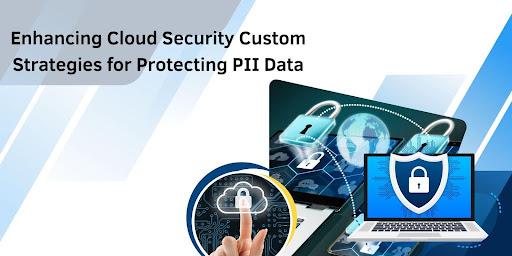In the age of innovation, data privacy remains one of the most pressing concerns in today’s digital landscape. With the widespread adoption of cloud computing, safeguarding Personally Identifiable Information (PII) has become a challenge requiring specialized security strategies. In a recent study, Sharath Chandra Adupa explores various techniques for securing PII in cloud environments, offering tailored implementation guidelines to help organizations maintain data integrity, privacy, and compliance.
The Growing Need for PII Protection in Cloud Environments
As organizations migrate data storage and processing to the cloud, they encounter rising cyber threats and compliance challenges. Traditional security measures often fail to protect sensitive data effectively. To mitigate risks, businesses must adopt custom security solutions designed for cloud environments. These tailored approaches address specific vulnerabilities while maintaining operational efficiency, ensuring robust protection against data breaches. As cloud adoption grows, prioritizing Personally Identifiable Information (PII) security becomes critical to safeguarding sensitive information and meeting regulatory requirements.
Core Encryption Strategies: The First Line of Defense
Encryption is a cornerstone of cloud security, safeguarding data with symmetric methods like AES-256 for storage and asymmetric encryption such as RSA for secure key exchanges. Organizations enhance control through Customer-Managed Encryption Keys (CMEK) and Bring Your Own Key (BYOK) models, ensuring compliance with data residency regulations. These strategies empower enterprises to retain sovereignty over encryption keys while fortifying defenses against cyber threats. Effective encryption remains the first line of defense in protecting sensitive information in cloud environments.
Policy-Driven Data Obfuscation: Enhancing Privacy While Maintaining Utility
Ensuring data privacy while maintaining utility is a key challenge in cloud security. Policy-driven data obfuscation techniques, such as automated data masking, anonymize sensitive information without disrupting business processes. Tokenization further enhances security by replacing sensitive data with unique identifiers, reducing exposure risks and simplifying compliance audits. These methods ensure that even in the event of a breach, compromised data remains unusable. By integrating such techniques, organizations can safeguard Personally Identifiable Information (PII) while continuing to leverage cloud computing for operational efficiency and regulatory compliance.
Anonymization and Pseudonymization: Striking a Balance Between Security and Usability
Anonymization irreversibly alters PII to prevent identification, while pseudonymization replaces identifiers but retains a reference under strict controls. These techniques are vital in regulated sectors like healthcare and finance. Emerging methods like differential privacy enable secure data analysis without exposing individual identities, enhancing data sharing and compliance. By balancing security and usability, these approaches protect sensitive information while maintaining data utility, making them essential for organizations navigating stringent privacy regulations and advancing secure analytics.
Implementing Robust Security Frameworks
Building a robust security framework requires more than encryption and obfuscation. Organizations must implement governance structures with clear roles, responsibilities, and compliance measures. Security controls should be seamlessly integrated into existing workflows, ensuring minimal disruption while enhancing protection. Continuous monitoring, risk assessment, and performance optimization are essential for maintaining a resilient cloud security posture. Proactive threat detection, automated responses, and adherence to industry regulations further strengthen defenses. A comprehensive approach combining technology, policies, and vigilance is crucial for safeguarding sensitive data in dynamic cloud environments.
Future-Proofing PII Security in the Cloud
As cloud technologies evolve, so too must security strategies. Organizations must adopt a proactive approach, regularly updating encryption protocols, refining obfuscation techniques, and integrating AI-driven security analytics to detect and mitigate threats in real-time. By embracing these advancements, businesses can protect PII while ensuring regulatory compliance and operational efficiency.
In conclusion, Sharath Chandra Adupa‘s research provides valuable insights into crafting effective security solutions that balance privacy with usability. As cloud adoption continues to grow, implementing customized security strategies will be crucial in safeguarding sensitive information against emerging threats.







